Brother Simon created a stir when he appeared at farmer Farrin’s market stand to buy some crusty bread and sharp cheese. The whole marketplace erupted in sound. Word quickly spread, and it seemed the whole town had already spilled into the streets when the mayor arrived.
“Simon! Is it really you? At our last town council meeting we discussed holding a memorial service for you.
“When we had not seen you for so many years, we concluded that no one could live that long without the necessities of life.”
Overwhelmed by the concern of his fellow citizens, Simon’s voice broke as he began.
“When I left seven years ago, I never knew you would care about one old man. I am deeply moved by your affection.
When God created the world, He made it flourish with beautiful and edible plants. To survive, I used the knowledge of our wilderness which I learned from my father. He was a prize hunter and woodsman nearly a century ago, and would stay out hunting game for weeks, even months at a time. As I grew older, he taught me how to survive in the wild.
My vow was to eat only edible roots. The past seven years have tested my understanding of my father’s lessons.”
The next day ten youths came to Simon with a request.
“You have said that you learned to survive alone in the wilderness from your father. Your present health after seven years of application proves your mastery of this knowledge. Will you teach us what you know?”
Thoughtfully Simon nodded.
“Yes, boys, I will teach you, but first you must each promise that you will one day teach these skills to your children.
Let us begin with the roots which the good Lord created for our food. I will begin by showing you one edible root for each of you.”
Eagerly the youths set out to begin their lessons on nature.
1. Cattail
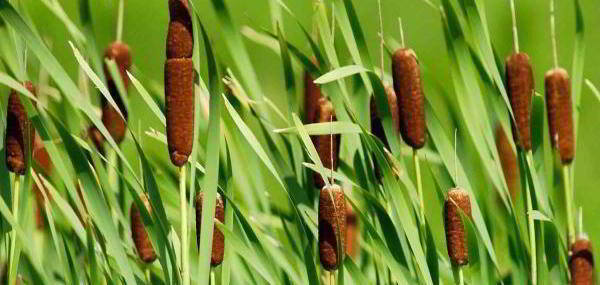
Simon knew the woods like the back of his hand. Skillfully he guided his pupils to a marshy area deep in the forest. The boys couldn’t see anything but bulrushes in the area of the swamp where Simon led them. But, while they were looking around for something remarkable, he called their attention.
“Though they may be so common to you that you scarcely notice them, here you see one of the blessings of the wilderness. These plants, called cattail or bulrush, grow near wetlands. Many parts of the cattail are edible, but today we will focus on the rootstalk which grows underground. It is very mild, and has almost no smell.
After washing this rootstock or rhizome, it can be eaten raw or boiled. Or, you can dry them and grate the starch off the fibers to use as flour. Another way to prepare them is to crush the roots in water, after the starch has settled you can pour off the water and use the starch. If you roast the roots until they are black and peel off the black layer, the inside is enjoyable.”
2. Flowering Rush
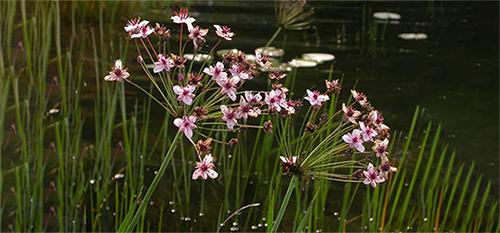 The next plant Simon showed them was a small plant growing in a few inches of water nearby. The plants varied in height from a couple of feet to three or more and had loose clusters of green and pink flowers. He pulled a plant out, and showed them a thick, fleshy rootstalk which had been hidden underground.
The next plant Simon showed them was a small plant growing in a few inches of water nearby. The plants varied in height from a couple of feet to three or more and had loose clusters of green and pink flowers. He pulled a plant out, and showed them a thick, fleshy rootstalk which had been hidden underground.
“If you peel this rootstalk,” he explained, “you can boil it like a potato. The plant is called a flowering rush, and is found across North America near rivers and by lakes, ponds, and marshes.”
3. Nut Grass
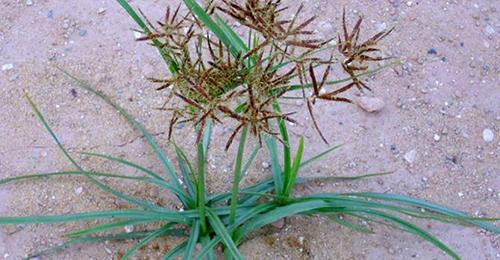 One the other side of the marsh where it was sandy, Simon bent down and pulled out a plant with a whole mass of roots with little half to one inch balls on the ends.
One the other side of the marsh where it was sandy, Simon bent down and pulled out a plant with a whole mass of roots with little half to one inch balls on the ends.
“This is nut grass, or nut sage, and it grows in temperate and tropical climates. You can tell it apart from yard grass by looking for its triangular stem (which differentiates it from toxic verbane), leaves in groups of three, and these little underground tubers that grow from the roots.
To get these little root tubers, loosen the dirt around the plant so they won’t break off when you pull on the stem. These nuts can be eaten raw, but are best when boiled and peeled.”
4. Wild Onion
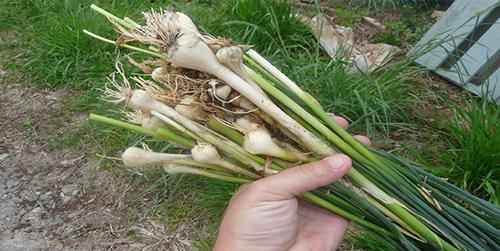 After this, Simon led the youths even deeper into the woodland to a place of dappled shade where there was evidence of frequent moisture.
After this, Simon led the youths even deeper into the woodland to a place of dappled shade where there was evidence of frequent moisture.
“While many bulbs are edible, one type that is very easily identified is the wild onion. There are several varieties, but all have a distinct ‘onion’ odor – if it smells like an onion it’s safe. If it looks like an onion but doesn’t smell like one, it may be toxic.
The bulbs of wild onions can be buried from three to ten inches below the surface, and can have wide or narrow leaves. The flowers may be white, slightly reddish, or blue. Wild onions can be eaten raw or cooked with or without the leaves which are also edible.”
Here are 15 more wild edibles you didn’t know you could forage for.
5. Garlic Mustard
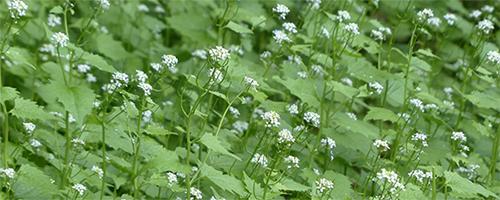 Nearby he pointed out a patch of garlic mustard to his rapt audience.
Nearby he pointed out a patch of garlic mustard to his rapt audience.
“In the spring and fall, when there aren’t any flower stalks, you can harvest the roots of this prolific plant.
They are spicy, and taste something like horseradish. You can recognize garlic mustard by its large heart-shaped leaves and onion or garlic-like odor.”
6. Jerusalem Artichoke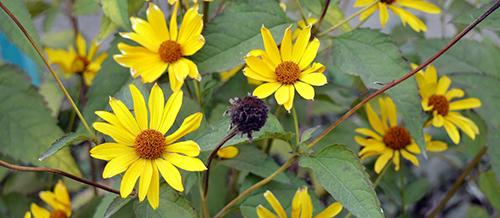
In the same vicinity was another plant Simon had eaten during his time as a hermit.
“This is a delicious plant. You can pick it out by its tall gangly stalks and bright yellow flowers. The Jerusalem artichoke, or sunchoke, has many edible parts.
The root, or tuber, is best harvested two weeks after the flowers fade. This nutritious meal can be enjoyed raw or cooked, but is easily overcooked and is not very pleasant mushy.
Perhaps my favorite way to eat Jerusalem artichokes is to cut up the tuber and use it in soup. It is one of the world’s best soup vegetables.”
7. Chicory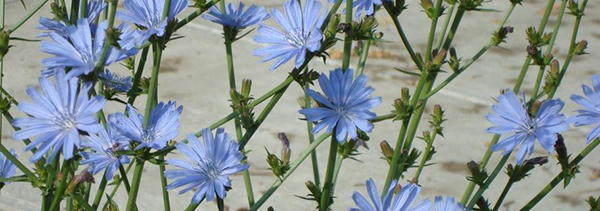
Near the edge of the woods, Simon directed the boys’ attention to a patch of little flowering plants with white and slightly blue flowers.
“This is chicory, a scavenger’s dream. The whole plant is edible – flowers, leaves and roots. The roots are tasty after they have been boiled. You can snack on the flowers while you wait.”
Related: 79 Edible Flowers in North America (with Pictures)
8. Arrowroot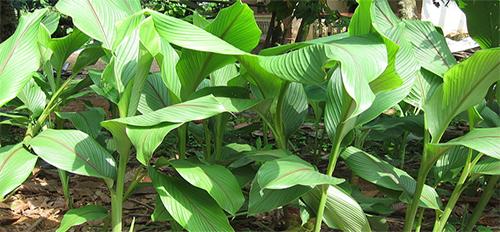
Simon directed them further east. As they approached a beautiful river singing on its way through the landscape, Simon pointed to a plant growing in the mud with arrow-shaped leaves. The youths were shocked by the size of the rootstock he dug up – over a foot long!
“This is the arrowroot. The roots can be yellowish or white, and resemble a parsnip but with constricted rings down its length. These tubers contain high quality, delicious starch. Wash the roots making sure to remove all the edible but unpleasant paper-thin scales.
Boil and eat, or chew the raw root and spit out the fibers. They are refreshing and healthy – and the younger roots will be easier to eat.”
9. Milk Thistle
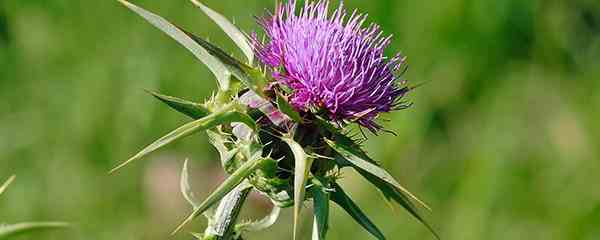 Simon pointed out the common milk thistle next.
Simon pointed out the common milk thistle next.
“The roots may be eaten raw, boiled, or baked. They have a purple flower, and unique leaves with milky-white veins snaking through them.”
10. Dandelion
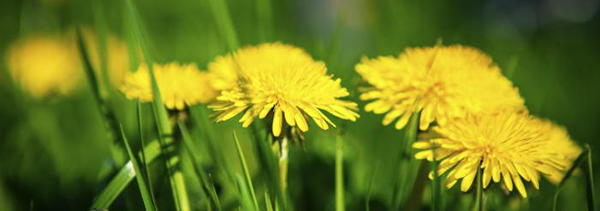 On the way back to town, the boys realized that Simon had only shown them nine roots. But before they had time to ask him about it, he stopped and announced:
On the way back to town, the boys realized that Simon had only shown them nine roots. But before they had time to ask him about it, he stopped and announced:
“Today’s lesson is almost complete. But perhaps you have noticed that I have only shown you nine of the promised ten roots.”
The youths nodded their agreement before Simon continued.
“The tenth root comes from a plant you know very well. In fact, most of you have probably had mothers who asked you to remove this plant from her flower beds at one time or another. But in reality, the flower of this plant is quite beautiful in its own wild way.
The dandelion is a forager’s delight. Like chicory, the whole plant is edible – flowers, leaves, and roots. A big plus is that the dandelion doesn’t have any poisonous look-alikes.
The roots are best harvested between fall and spring when the plant is dormant. Dig deep when harvesting to make sure you get the whole root. After cleaning, boil it to yield a delicious and highly nutritious food.”
Simon promised to take them out the next day to show them 10 edible flowers if they could name all ten roots he had helped them identify as the ten edible roots which kept him alive.
You may also like:
 The Only Plant That Should Be in Your First Aid Kit
The Only Plant That Should Be in Your First Aid Kit
Surviving an EMP the Early Pioneer Way (Video)
24 Lost Gardening Tips from 100 Years Ago
23 Medicinal Plants the Native Americans Used on a Daily Basis






















More!
Love this article……..
Very interesting but what did he eat in the winter?
Does he eat meat, or is he a vegetarian?
Store up supplies for the winter
I have dug up edible Jerusalem artichoke tuberous roots in January, during a thaw when the ground wasn’t frozen. I planted them on purpose along the edge of a vegetable garden. On the good side, they grew fine and were pest-free. But if I had it to do over, I’d mix a lot of sand and ground-up straw into the soil where I planted them, because in our Midwestern clay, the tubers met a lot of resistance as they tried to expand, and so tended to be quite small even when fully mature. They also would be easier to clean if they weren’t covered with fine clay when harvested.
Regarding chicory roots: I have read elsewhere that you can roast and then grind them to make a coffee substitute. Presumably it would store OK for a while. That doesn’t solve the food in winter problem, but having something warm to drink in the winter would be a plus.
Giurgi, What an interesting name. I am so enjoying this web site. Thank you so much for the information. As I live in the Phoenix area, would anyone care to identify edible roots and plants in desert areas. I suspect many cacti have edible parts. Although I enjoyed this information, it seems to me that these plants (excepting dandelions which seem to grow everywhere) are all found in more temperate areas with more water available. Lastly, is there any merit to cultivating any of these wonderful plants. Again, thank you so much for the information. Have a blessed day.
Aloe vera is found in the desert, it’s a succulent. I know you have aloe plants. But not all parts are edible. Aloe is excellent for wound healing too.
Love your post . i knew about cat tails but surprised to learn of so many more all arround me .want to learn more .
I love raw cattail roots in spring. They smell and taste like cucumber. Great in a soup. Indians here dry and grind the root to use in soups or making a tortilla like bread. The pollen is high protien. Gather by shaking the forming cattails over a bag. Useable year round as a flour stretcher or substitute or throw a handful into an almost done soup to boost protein and add subtitle flavor. Some bake the root much like a potato. I haven’t tried that.
Even the tender spring shoots and underwater stems are edible. I like to steam the spring shoots like asparagus. The tender stems are much like bamboo shoots in oriental cooking. Crisp, tender, more a filler and texture than flavor in a dish.
Milk thistle isn’t a favorite to handle because it is a thistle so quite prickly to handle but it is tasty. Even the peeled stems and unopened flowers are edible much like a mild flavored asparagus stalk or artichoke flower bud you would buy in the grocery store. Steam, boil, herb flavored pickle. All work well.
I’m waiting to read what flowers he will tell us about.
My grand mother loved dandelion salads, roasted roots ground and added to her coffee much like chicory added to coffee, and dandelion wine. The wine was simple, fresh rinsed off morning flowers, bruise them a bit but not maashed, a packet of yeast to a gallon jar nearly filled with flowers and a simple syrup of 1 to 1 1/2 cups sugar, boiled in a quart of water. Put that over the flowers and dissolved yeast. Add water to cover flowers. Leave three inches of empty space in the top for the yeast to work. Cover the jar with a clean smooth cotton towel. Set in the dark pantry. Bring out to stir once a day to keep every flower wet. In 6 weeks strain out flowers and squeeze to keep all the liquid possible. Can be consumed at that point but flavor is best after a few months. Good for a year or more if closed up tight.
I follow the same Steps but using only the juice from steamed prickly pear cactus fruits. Taste is best after 6 months and it will keep well for a year or two.
I live in NM high mountain desert so it’s juniper growing area. We don’t have the lush green plants to go to freely but there is good food here also. Burn the stickers off the younger pads of prickly pear cacti. Then dice an cook like green beans. After burning off the stickers lay young pads on a hot grill and cook each side till it changes shades of green. It should be tender and have the texture and smell of roasted green chili. A pad layed on your hamburger pattie is delicious. Young can grill the pads then dice them and add to your roasted green chili to calm the heat if the chili’s are too hot for your taste.
I add the diced pads to my rabbit stews or casseroles. They enhance the flavor and add a natural thickened.
Auto spell is changing some words.it drives me crazy. I think it’s still understandable.